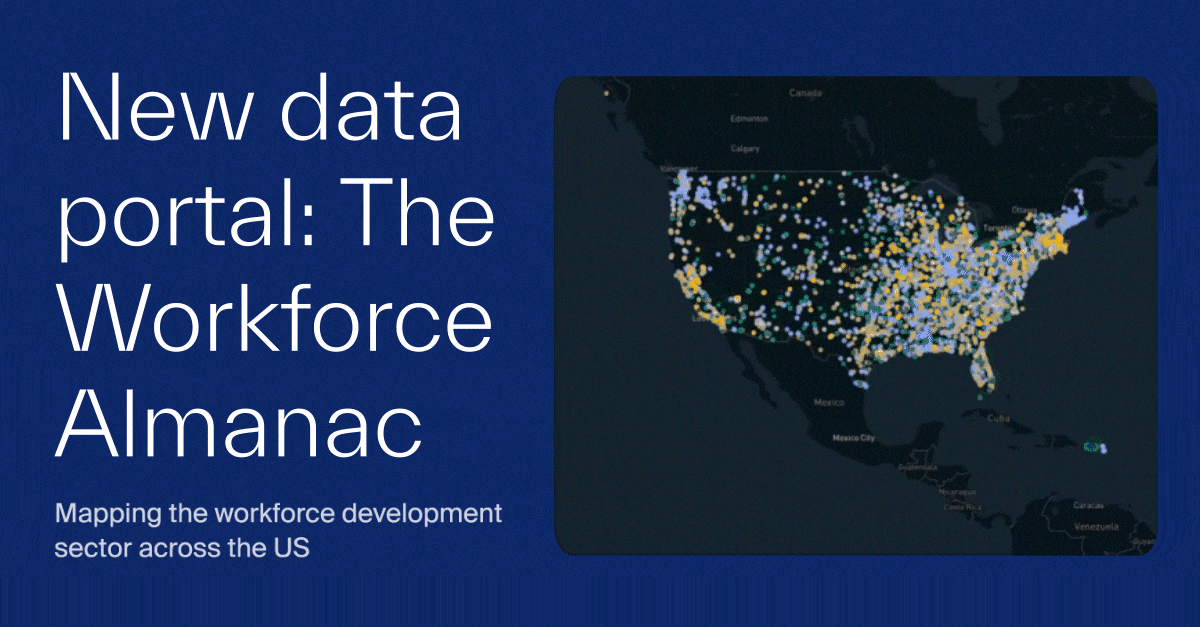Led and conceptualised by The Project on Workforce at Harvard, with the website developed in collaboration with UK-based visual data consultants infogr8, the first iteration of the Workforce Almanac Data Portal, charting nearly 17,000 providers, acts as a go-to picture of US workforce training providers. It is user-friendly for all levels of data literacy and is designed to help practitioners and researchers engage with data more easily.
It will help policymakers, training providers, employers and workforce intermediaries, and aims to help orient resource allocation towards equity, effective training and areas of highest need. Users can also compare providers against population demographics per state and county.
The Workforce Almanac reveals a wide range in the number of workforce training providers serving the labour force across US states, from 6 per 100,000 workers in Connecticut to 32 per 100,000 workers in Maine. It also shows a great variation in the makeup of workforce training providers serving different US states and territories. For instance, Massachusetts relies heavily on apprenticeships, while DC relies heavily on job training non-profits.
Jake Madsen, General Manager of EdTech at infogr8 says: “The Workforce Almanac gives us an engaging visual way of unlocking a more systemic view of fragmented, siloed US workforce training data and bringing it together in one place. This portal makes data accessible and explorable to users at all levels of data literacy, and tells a skills training story that researchers, practitioners, educators and policymakers can instantly relate to.”
The portal is designed to encourage more and better pathways to economic mobility. It will help training providers see areas for development and visibility, it will help policymakers make more informed funding decisions, and it will help researchers form a more accurate picture of workforce training.
"Nearly 70 million workers in the United States are skilled through routes other than a bachelor’s degree and potentially rely on the infrastructure of short-term, post-high school workforce training opportunities that the Workforce Almanac is mapping," says Peter Blair, faculty co-chair of the Project on Workforce and advisor of the Workforce Almanac.
Researchers mapped almost 17,000 providers across the US (showing name, address and type) of short-term, post-high school training opportunities for learners to gain work-relevant skills.
Why now? With American employers seeking to fill in relevant skills gaps, either through attracting newly trained talent or reskilling/upskilling workers, the release of the Workforce Almanac's bigger picture on short-term workforce training opportunities is timely.
"There is a significant mismatch in the US between job openings and job seekers. Emerging technologies require new skills, and a more integrated approach to workforce training is required to better prepare the U.S. workforce now and in the future," notes David Deming, the Workforce Almanac Principal Investigator and the Isabelle and Scott Black Professor of Political Economy at Harvard Kennedy School.



